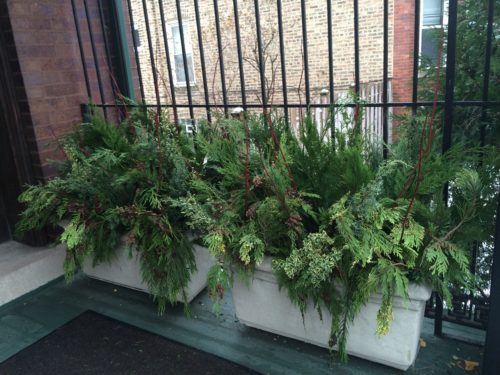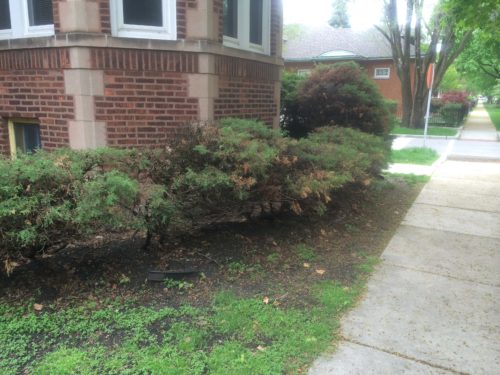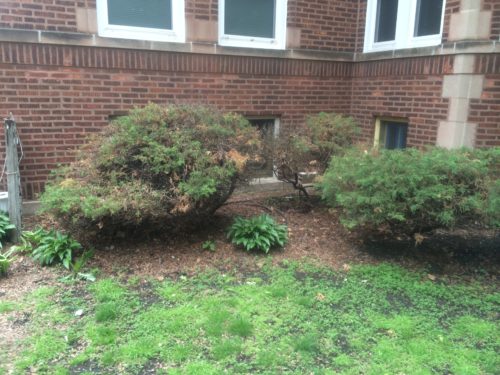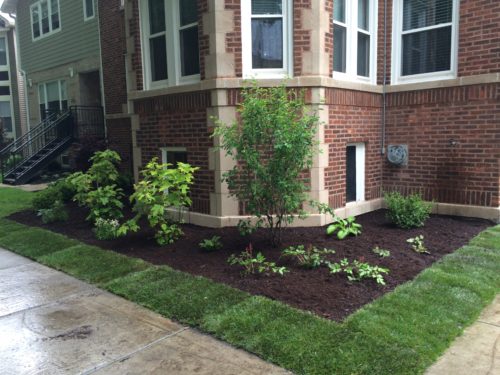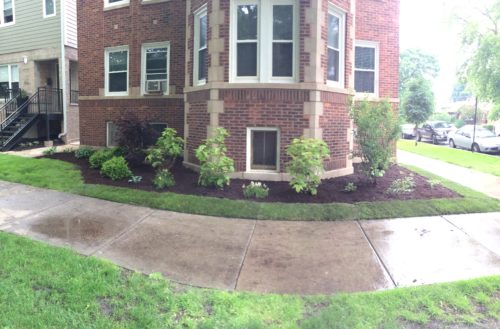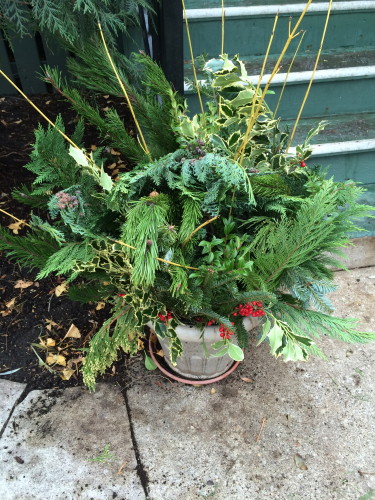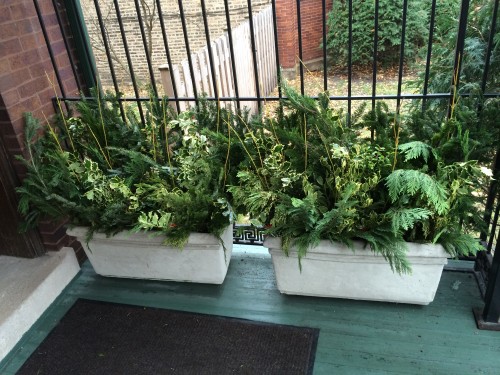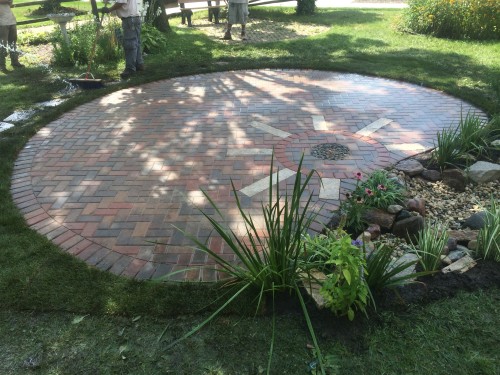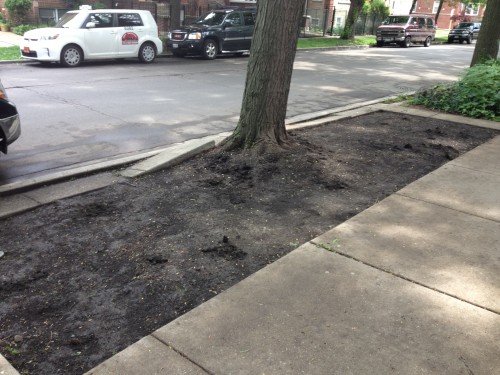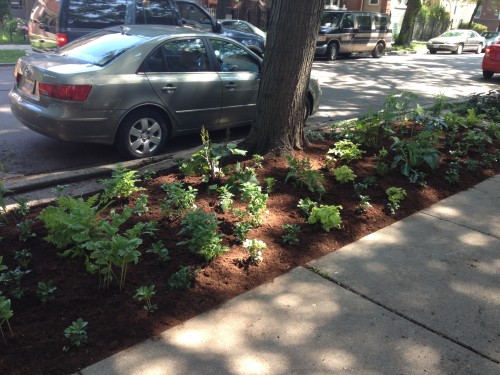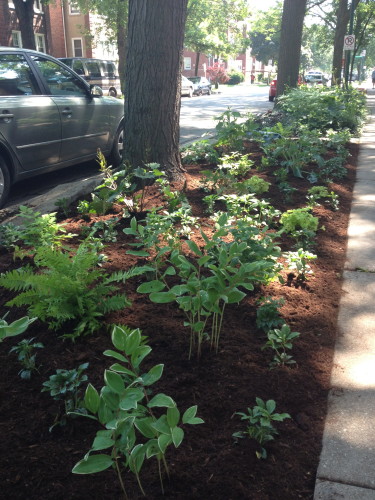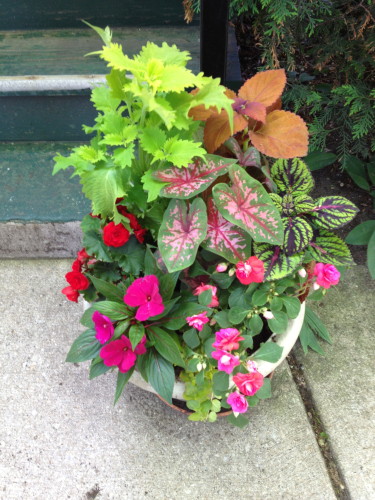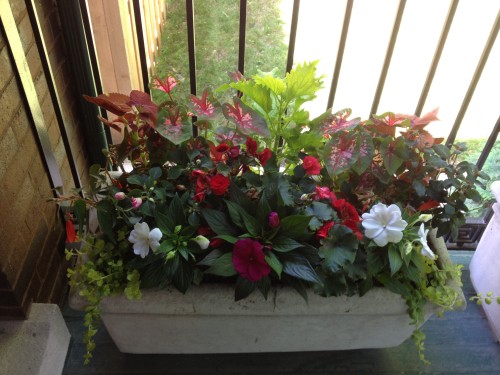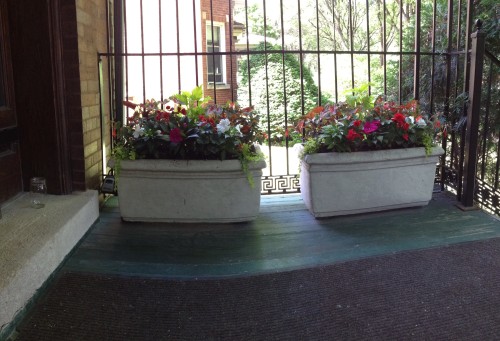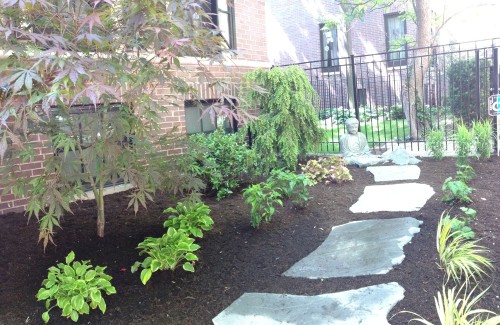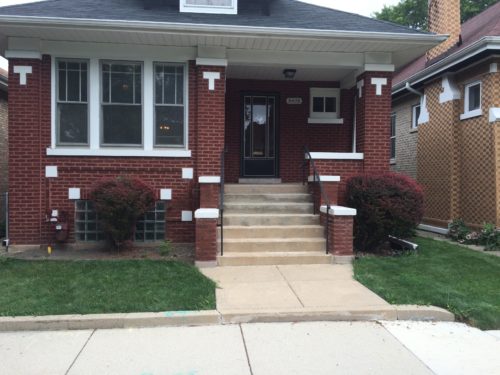

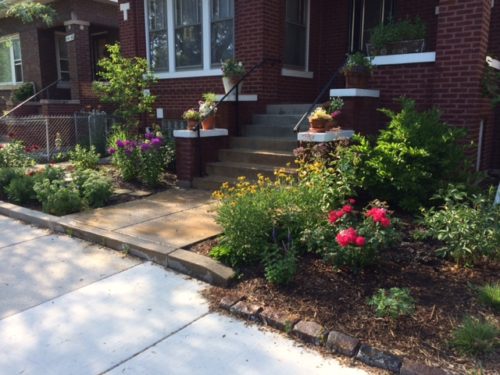
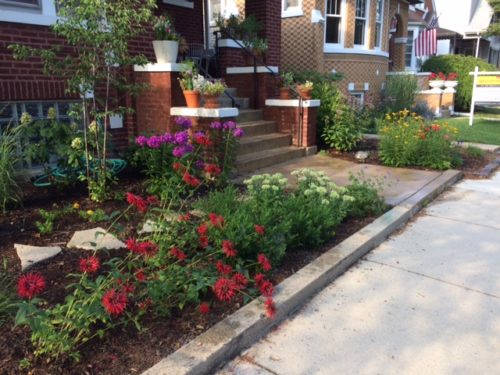
In the late summer of 2016, I finally became a homeowner with the purchase of a beautiful brick bungalow in the Portage Park neighborhood of Chicago. For a landscaper like myself, the front yard stood as an open slate of possibilities. Thankfully it was a pretty easy transformation. First to go were those tired old Japanese Barberry bushes. Never a fan of turf grass, the lawn was next on the list for removal.
The transformation needed to move quickly as there were whisperings of a grand party the first weekend of October to celebrate three major milestones: the aforementioned house purchase, my fiftieth birthday and my tenth wedding anniversary. Those final two milestones occurring on back to back days.
I managed to pick up a few of my favorite plant specimens on sale at various locations around town. To the left of the staircase is a slender multi-stemmed Amelanchier, commonly known as a Serviceberry. Many friends and co-workers know of my unwavering love and use of this native in my designs and plantings. The Amelanchier provides multi-season interest with the arrival of bursts of white flowers in May that then turn to bluish purple edible berries clustered all over the tree. Finally fall’s arrival brings a wonderful array of pinks, oranges and reds to the changing foliage.
Behind the Serviceberry is another of my preferred native shrubs, the oak leaf hydrangea, Hydrangea Quercifolia. Like the Amelanchier, the Hydrangea provides multi-season delight. Large white conical flowers slowly turn pinkish red throughout the summer. Even as the blooms die and turn brown they remain clustered on the plant held high by erect branches that make for great cut arrangements or provide winter interest if left to be highlighted by the snow. Perhaps the greatest feature though is the fall leaf show. Large lobed and textured leaves turn a brilliant rich wine red color highlighted even more by that low late season Sun. Lastly even in winter the peeling exfoliating bark makes for further winter season interest bringing quiet intrigue when much else in the landscape is barren. The bark grows more and more gnarled and textured with age. Another selling point is the Hydrangea Quercifolia is a lover of shade and so can be adapted to most any garden.
Bringing both early bloom and aroma to the garden, I have planted a Korean Spice Viburnum and a Stellata Magnolia on either side of the staircase. Though the blooms last a mere two weeks, the heavenly fragrances that greet us on our walk up the front steps for those short days are well worth it.
Much of the rest of the front yard is a mix of native perennials and grasses. There is a scarlet red Monarda, a light blue dwarf Aster, Rudbeckia, Echinacea, Baptisia, Amsonia, Eupatorium. But my favorite perennial find was a garden Phlox called Laura. Found on a whim at Fiore’s nursery in Chicago, Laura proved to have the most glorious purple blooms with the faintest white eye in the center of the flowers. The plant maintained a constant flower display for a good three to four months. Perhaps the greatest reward was that Laura did not show any signs of the powdery mildew that seems to beset almost all other Phlox I have encountered.
In so describing the beauty of the end result I have glossed over the start of the story, the Milestone party. Well unfortunately that never happened that weekend. Having just moved in, and having barely got the contractors out the front door, we were too overwhelmed to open the front door to a cavalcade of guests. Thankfully though, the best present I gave myself was a new front yard.
Thanks for stopping by for a visit. Hopefully you have enjoyed the transformation of the ordinary into the extraordinary.



